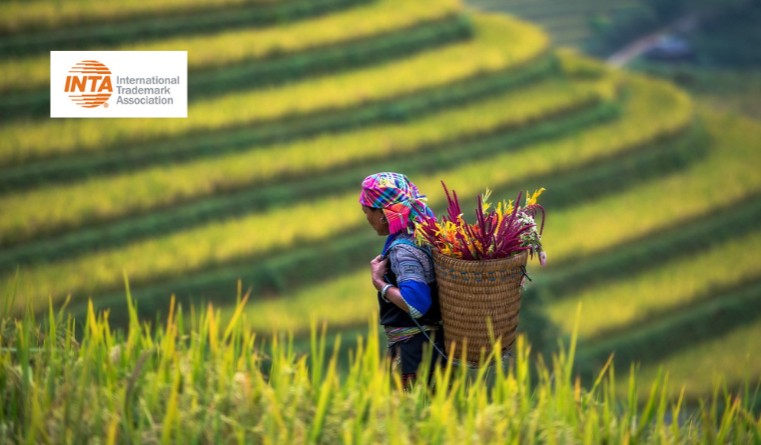INTA 2025: WIPO indigenous rights treaty celebrated
21 May 2025

On May 24, 2024, the WIPO Treaty on Intellectual Property, Genetic Resources and Associated Traditional Knowledge (GRATK) was adopted by WIPO member nations, at the culmination of 25 years of negotiations.
“It’s a breakthrough in that it’s the first WIPO treaty to specifically reference traditional knowledge and indigenous communities,” said Michael Pampalone, founder and principal at Dahan Pampalone in Merrillville, Indiana, and vice chair of INTA’s Indigenous Rights Committee. Pampalone, speaking at a session of the International Trademark Association’s 2025 Annual Meeting in San Diego, went on to say that the treaty is a gateway to better understanding and acceptance of the value and importance of traditional knowledge of indigenous communities.
“It fosters inclusion and transparency, while serving to provide a framework to improve upon our modern IP systems,” he said.
“The treaty is a positive step as part of the larger trend of looking at how Western-style IP protections can interact respectfully with the knowledge and culture of indigenous peoples,” said Edwina Lewis, director, trade agreements and indigenous knowledge, at IP Australia in Canberra. “In a world where there is increasing interest from consumers about the practices of organizations, we think it is important for IP Australia, and others in the IP ecosystem, to consider how to appropriately engage with indigenous peoples’ knowledge and culture.”
Lewis explained how IP Australia defines the terms traditional knowledge and traditional cultural expressions. Traditional knowledge, often abbreviated as TK, includes the know-how and practices of indigenous people relating to areas of knowledge such as ecology, medicine, agriculture and more, including, in Australia, bush foods, the native Australian plants, animals, and fungi traditionally used as food by indigenous Australians.
Traditional cultural expressions, or TCEs, can be tangible or intangible, and include arts, crafts, songs, stories and dance, Lewis said.
Australia’s indigenous people, the Aboriginal and Torres Strait Islander peoples, have more than 65,000 years of continuing history and culture.
“Although in a Western IP setting there tends to be a distinction between genetic resources, traditional knowledge and traditional cultural expressions, in the culture and knowledge management systems of indigenous peoples, these concepts are not separate,” Lewis said. “They are interlinked, and it’s important to note that the word ‘traditional’ here indicates the link to a cultural context for indigenous communities. It does not mean that this knowledge is only historical. TK and TCEs are being developed, and evolve.”
Under the terms of the GRATK Treaty, users of TK or TCEs must disclose in their patent applications the country or jurisdiction of source of the genetic resource if their invention is based on it. If the invention is also based on TK associated with the genetic resource, the application must also disclose the indigenous peoples or local community that provided that knowledge. If the application doesn’t know the source, they can make a declaration to that effect, Lewis said.
“We’re seeing internationally a range of jurisdictions that have already implemented laws relating to the protection of traditional knowledge and cultural expression,” she said. “And we are looking at different legal and policy leaders to support economic empowerment for indigenous people. There is an increase in people wanting to engage appropriately with traditional knowledge.”
Lewis said that the latest Indigenous Business Snapshot from Melbourne University shows that indigenous businesses contribute more than A$16 billion (US$10.3 billion) to the Australian economy, employ 116,795 people and pay A$4.2 billion (US$2.7 billion) in wages.
In Australia, Lewis says, studies show that indigenous people are concerned about how their knowledge is used. “Some of the key things we have heard that they want to control their knowledge, protect their knowledge and [receive] recognition and respect,” she said.
Wend Wendland, director of WIPO’s traditional knowledge division in Geneva, spoke more about the treaty. “When the treaty was gavelled, it was an extraordinary moment. It was a 25-year process. There were many hugs, many tears of joy and many more hugs,” he said. “The treaty has been described as historic, a landmark, a new era in IP and a major achievement.”
Wendland said the treaty is the first WIPO treaty to address biodiversity in relation to patent law, and the first to address indigenous peoples. “It’s a treaty that provides a new first level of access, inclusivity and empowerment,” he said. “Its adoption by consensus shows that the multilateral system can still work, and that the patent system can evolve in a considered and measured way.”
The treaty has not yet come into force, but will when there have been 15 ratifications. Wendland said that Malawi has so far ratified the treaty, and that he expects the treaty to come into effect in two to four years.
He said there have been 42 signatures to the treaty, which are due by May 24, 2025, and of which at least one more is expected. Among the signatures already received are Australia, Brazil, Chile, Columbia, North Korea, Indonesia, Iran, the Marshall Islands, Niue, Peru, South Africa, Switzerland and Vanuatu.






